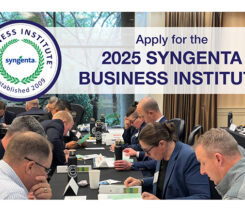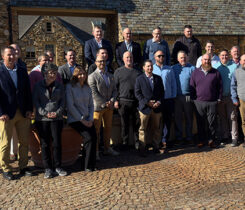Road trip research notes
My road trips to education sessions so far this year have included the Nutrient Management Symposium, the Central Florida Vendor Expo and the Everglades GCSA Spring Symposium. And they all had me wondering what new or modified turf management practices are on the horizon.
It’s no secret that Florida has been ground zero for the U.S. Environmental Protection Agency’s Numeric Nutrient Criteria, spawned by a court settlement and not the result of open debate of the facts. In the wake of all the angst raised by activists about nutrient pollution of waterways, the University of Florida undertook an eight-year study of nutrient management practices sponsored by the Florida Department of Environmental Protection.
The most important result was that the summer fertilizer application bans forced people to apply in the spring and fall when plant roots are just renewing growth or shutting down and plants are less effective at absorbing nutrients. Nutrients applied on test plots in the summer months were essentially taken up with little or no leaching at all.
Common sense precautions against applying fertilizers in advance of forecasted heavy rains or too close to water bodies are always in effect.
Another key find was that if you bring in sod you need to find out when the plots were last fertilized. Sod farms keep the plots lean and mean like a lot of “firm and fast” golf courses. But when harvesting the sod for a customer, the farms want it looking good, so they fertilize.
Researchers have found that if a sod farm has fed the turf in a two- to six-week period before harvesting, a lot of the nutrients are transported in that soil layer with the sod. Because of that information, the state may change its model fertilizer ordinance to include a 30- to 60-day waiting period before applying more nutrients. That makes sense, as new roots must sprout from the stolons before they can take up nutrients.
Fertilizer formulations were another topic that piqued my interest. Over the years we have seen phosphorous fade from most blends. There are times when it is appropriate to apply phosphorous, and we do more soil and tissue testing to determine that need. Recent comments by Auburn University’s Elizabeth Guertal, Ph.D., at the Everglades Symposium indicate we might want to start looking at potassium levels in our blends as well.
Another area gaining research interest is how light intensity and duration affects plant growth efficiency. Pretty soon, “What’s in Your Cart?” might contain a light meter along with the moisture meter. The use of moisture sensors and meters is becoming more commonplace as we have to face concerns over water availability (check out “Beat the summer heat, plan for snow mold” for details on how popular these meters have become for one company.)
Now the amount of light a plant receives during any given period is being explored as it affects plant transpiration, which affects not only water and nutrient uptake, but also the ability to fight disease and withstand wear. We know turf suffers in the shade, but now simple hazy, cloudy days can limit turf viability.
We are always at the mercy of the weather, but with this new research we might be able to modify some of our inputs or practices to improve plant vigor and make wiser decisions.
One thing I have learned from my travels so far this year is that continuing education is more important than ever in the golf course maintenance industry.
We will always have basic truths when it comes to cultural practices, irrigation management and nutrient requirements, but you can bet there is always going to be room for improvement.
Thanks to advancements in research technology we can unlock more of nature’s secrets and learn to modify our practices to become even better environmental stewards.
Joel Jackson, CGCS-Ret., is director of communications for the Florida GCSA.










